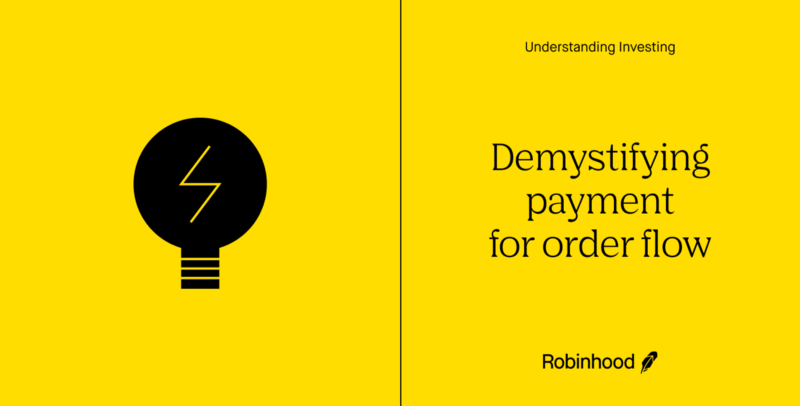Demystifying payment for order flow

It’s been more than a year since major brokers in the U.S. went to zero commission, following the model Robinhood pioneered. Now, with retail investing surging, more people have been asking questions about how brokerages make money. Like other brokers, one of the ways that Robinhood makes money is through what is called “payment for order flow,” or rebates from market makers. Unfortunately, there’s a lot of misinformation out there, so I wanted to shed some light on the facts, and how this practice benefits customers.
First, some background on payment for order flow. When you buy or sell stocks, ETFs, and options through your brokerage account, we send your orders to market makers who execute them. To compete with exchanges, market makers offer us rebates. Market makers typically give you better prices than exchanges.
For stocks, our clearing broker Robinhood Securities earns a fixed percentage of the bid-ask spread at the time your trade is executed. All market makers we route to pay us at the same rate for equities, ETFs and options. That means there’s no incentive for us to route your order to any specific market maker based on payment we receive.
In fact, our routing system incentivizes the market makers we have relationships with to compete for order flow by giving you a better price than the one you were quoted at the time your order was placed. This algorithm prioritizes sending your order to a market maker that’s likely to give you the best execution, based on historical performance.
“In the fourth quarter, we earned an average of $0.0023 per equity share. That’s two-tenths of a penny for every share you buy or sell.”
A common misconception is that PFOF is a black box. In reality, Robinhood, like other brokers that route equity and options orders, is required to publish disclosures each quarter regarding execution and routing practices that include information about the rebates we receive, the market makers we route to, and the percentage of orders that we route to each of them. For example, we earned an average of $0.0023 per equity share traded in the fourth quarter of 2020. That’s two-tenths of a penny for every share you buy or sell.
Robinhood has always stood for the little guy. Many of our customers are getting started with less, which often means they’re trading a smaller number of shares. The vast majority of Robinhood orders are under 100 shares. That means at $0.0023 times 100 shares, on the vast majority of orders, we earn less than 23 cents per order, on average.
Believe it or not, it wasn’t that long ago that paying for a trade looked very different — and more expensive. For years before Robinhood’s founding, brokerages earned commissions in addition to earning PFOF every time you traded with them. Robinhood changed the industry and pioneered the commission-free model — others then followed.
I’ve worked in this industry for more than two decades, and it’s been incredible to watch this transformation unfold. To illustrate how far we’ve come, here’s a mock-up commission card including real numbers from a major retail broker in 1993:
Compare $30 + 1.7% of the principal in commission (or $39 per trade minimum) with 23 cents in payment on a 100-share order.
It’s easy to see why there’s no better time to be a retail investor. Robinhood acted for customers when we changed commissions forever and we’ll continue to push the industry on behalf of everyday people moving forward.
Jim Swartwout is the President and COO of Robinhood Securities.